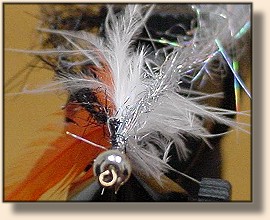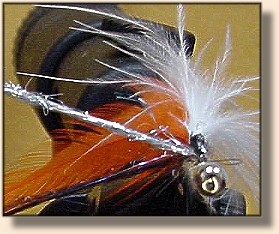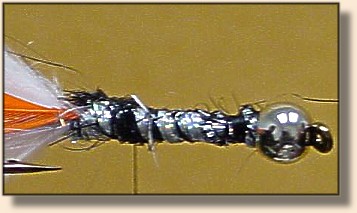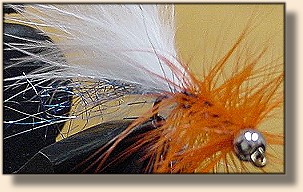
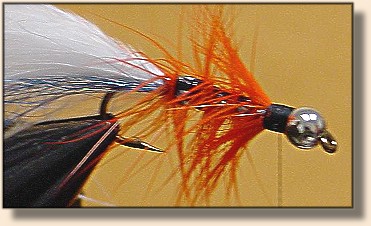 |
|
Dan Z Zonker
|
Tying Steps:2. When tying a Streamer Pattern Marabou is used for the tail because of its natural movement. I also use marabou but added a layer underneath of Lite Brite for great color and to imitate baitfish swimming. Layer your Lite Brite in this fashion. I always use the lighter colors on the bottom and the darker blue color on the top. Starting from bottom to top:
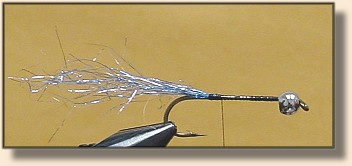 3. Tie in the Marabou of your choice over the Lite Brite strands.
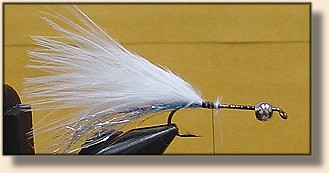 4. Tie in the hackle and leave it pulled back for later use.
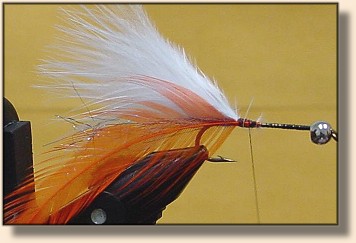 5. This is the step where you will tie the body of the Zonker. The body is a woven body. It is somewhat like the body of a Bitch Creek Nymph fly. I did not know how the blue would show up on the pictures so I used black. Black is not used in the fly. Please use BLUE from the Minnow Blue Lite Brite which you have separated from the silver. Bring your thread up to the eye of the hook. Start the body by tying the blue material (shown in black ) down the near side of the hook, stop when it meets the Marabou. Then work the thread back up the hook to the eye.
|
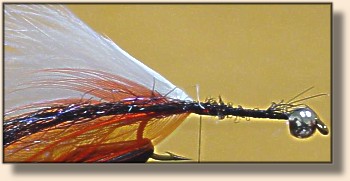
6. The light color of the body is layered as follows:
Take this combination and tie it to the far side of the hook.
Tie it all the way down the hook till it meets the Marabou.
Then bring the thread up the hook to the bead.
7. This is the weaving process of the body. I will do my best to describe it to you.
If you are familiar with the Bitch Creek Nymph it is the same process. (Or see the step-by-step
instructions HERE). With your right
hand wrap the light strands of lite brite over the top of the hook. With your left
hand wrap the blue material over the light material on top of the hook, then under
the hook stopping on the near side of the hook. Now wrap the light material
over the dark material onto of the hook. You want to have the dark material
on top and the light material weave into the bottom of the fly. The appearance
of the fly is to have a light bottom and a blue top woven together. Continue
down the hook to the beadhead tie off and trim excess. Please see the photos below.
8. Keep the thread near the bead head of the fly. With hackle pliers turn the
hackle down the hook to form the body. Bring hackle all the way till it touches
the beadhead and tie down. Make a couple turns with the hackle before you tie
it off. Cut excess hackle. Make the neck of the Zonker by pulling the hackle
back with your finger build the thread up to meet the bead head and work
it down just a bit. It is up to you how long you want the neck. Remember the
more body you have on the fly the more flash you'll have.
|
About the Dan Zezena:
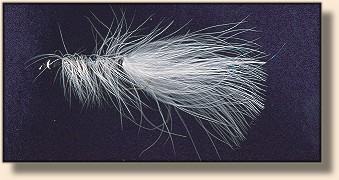
|
|
For more great flies, check out:
Beginning Fly Tying,
Intermediate Fly Tying and Advanced
Fly Tying.
|
